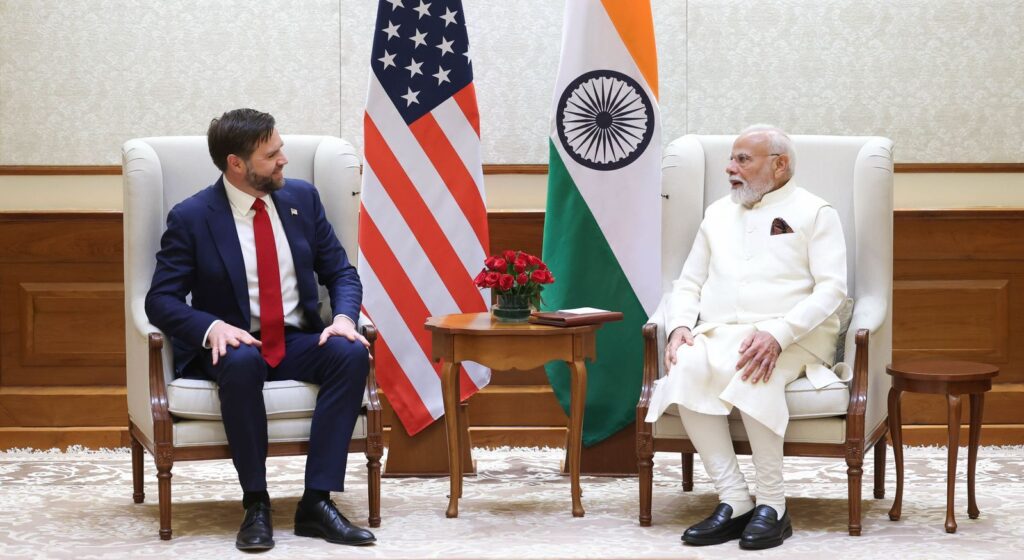Wednesday, April 23, 2025 | Washington, D.C.

The success of 50th Vice President James David (JD) Vance’s maiden visit to India was unfortunately eclipsed by the somber mood of Tuesday’s terror attacks that left innocent tourists dead and several wounded and shattered the tranquility of idyllic Kashmir.
The Vice President’s visit had personal and official significance for the second-in-command. The visit reflected the importance of the strategic partnership that the Trump administration seeks to build on. While the nation comes to terms with the terror attack, India will continue to remain resilient, and its citizens will show the steely resolve that epitomizes the Indian spirit. This incident is a stark reminder of the need to strengthen the U.S.-India security partnership and work more closely and effectively to achieve a “prosperous and peaceful” 21st century.
The Vice President’s visit to India built upon the deliverables that Prime Minister Modi and President Trump agreed on during their February meeting, including trade, defense, energy, and the importance of shared security across the Indo-Pacific region. At a time of trade and tariffs, Vice President Vance’s message was one of reassurance.
On trade, Vice President Vance underscored that the Trump administration seeks trade partners based on fairness and shared national interests, and Washington in New Delhi sees a partner who can work together to build an open, balanced, and fair system of global trade.
As both governments work toward expanding bilateral trade to $500 billion by the end of the decade, VP Vance’s message shows concrete steps taken by both countries to turn ambition into action. He announced the finalization of the Terms of Reference for trade negotiations-an essential roadmap for future economic cooperation.
In the defense sector, which assumes a greater significance in light of the terrorist attacks, the U.S. and India have never been closer, as India engages in more military exercises with the U.S. than with any other country. India’s leadership in hosting the Quad Leaders’ Summit later this year underscores the vital role of ensuring a free and peaceful Indo-Pacific. As a Major Defense Partner, India now collaborates on par with America’s closest allies in defense and technology infrastructure collaboration.
The U.S.-India COMPACT initiative will serve as the cornerstone of this evolving defense partnership, from the joint production of munitions such as Javelins and Strykers to the launch of the Joint Autonomous Systems Industry Alliance, advancing maritime surveillance and strategic innovation.
Energy security is another pillar of the strategic partnership. The Trump administration aims to build on an energy partnership that includes offshore natural gas, civil nuclear collaboration, small modular reactors, and cooperation on critical minerals.
The U.S.-India Trust Initiative will further solidify both nations’ technological collaboration, boost innovation ecosystems, and drive progress in both economies.
A stronger India means stronger Indo-Pacific. Together, Vice President Vance echoed, “We will build, innovate, and lead,” to strengthen the U.S.-India partnership, which will shape the future of the 21st century.
Vice President Vance’s short but productive visit to the country, which holds special personal significance for him, epitomizes the people-to-people ties and the enduring and warm bonds that connect our nations.
For media inquiries and further information, please contact:
Ankit Jain: ajain@usispf.org
Akshobh Giridharadas: agiridharadas@usispf.org

